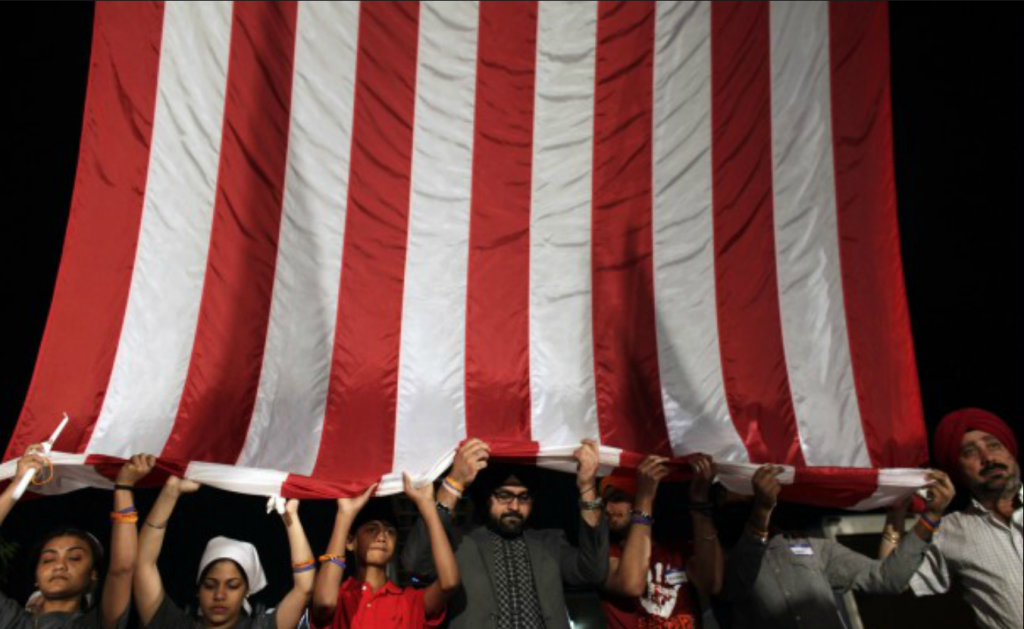The mass murder of six Sikh worshipers in a Sikh Temple in Milwaukee, Wisconsin one year ago was a horribly tragic event, underscoring a latent and persistent xenophobia in American culture that manifests itself at its worst in hate crimes of this sort and calling attention once again to the problems caused by weak gun control regulations that allow easy access to automatic weapons. I am compelled by the photograph above, however, because it tells a different story, as family members of those tragically killed hold onto an American flag as they participate in a candlelight vigil mourning their lost loved ones.
Sikhs are often confused for Muslims and suffer all sorts of derision and discrimination for their national and religious otherness; one might thus imagine that they would have good reasons to turn their backs on the flag, or in any case not to celebrate it, particularly as they mourn the family members who were violently taken away from them. But what the photograph shows instead are citizens-in-mourning. There is no hubris here. They do not drape themselves in the flag, nor do they use it as a totem to divert attention from national failings or to glorify an idealized past. But neither are they willing to separate themselves from it and the sense of community—and the promises for freedom and justice—that it marks, however imperfect that community or those promises might be in practice. Indeed, there is a sense in which they animate the flag and all it stands for by holding it up, literally giving it life (rather than just letting it hang as a backdrop) and demonstrating the sense in which they are as important to it as it is to the them–even at, perhaps especially during, moments of heart rending despair.
Photography is a performative medium and here we see citizens performing what we might call a mournful love of country that does not succumb to an all too easy cycle of belligerence. It is perhaps a model for what American might yet become.
Photo Credit: Darren Hauck/Reuters

Discussion